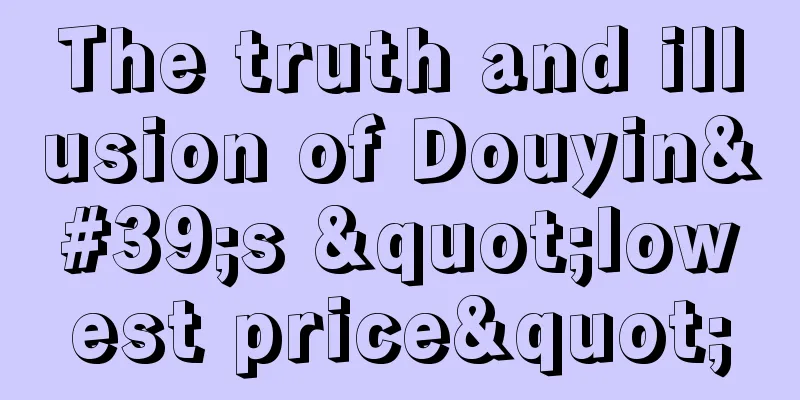What are the top data analysis methods?

Students often wonder: “What are the top data analysis methods?” "During an interview, if someone asks you: What methods have you used, how should you answer?" “Why do people think the analytical methods I talk about are too simple?” Today, we will systematically review data analysis methods so that everyone can find out which method is applicable and see how well they can perform. First of all, not all methods with the word "analysis" in their names are data analysis methods. There are many XX analyses, which are professional tools in statistics, operations research, and mathematics, and do not directly point to the answer to business problems. When people ask: "What are the analytical methods?", they expect to hear a method that can give a conclusion. So if you want to answer this question well, we need to go back to the question: what business problems does data analysis solve? From the perspective of business use, data analysis can solve five major types of problems 1. How much is it (data describing the situation) 2. What is it (establishing data standards) 3. Why (exploring the cause of the problem) 4. What will happen (predict business trends) 5. So what (comprehensive judgment of the situation) There is a specific combination of methods for each problem scenario (as shown below) 1. How to solve the problem of “how much is it”To describe the situation with data, it is necessary to establish a complete data indicator system. To establish a data indicator system, it is necessary to sort out the logic between data indicators. There are two basic logics between data indicators: serial logic and parallel logic, which derives two basic analysis methods: funnel analysis method & indicator decomposition method. As more businesses are disassembled, people find that certain data indicators can be used in fixed combinations, such as:
These are also commonly referred to as: analytical models. But note that these are just presentation data. Data + judgment criteria, then there is an analysis conclusion. The analysis of judgment criteria is: what kind of problem is it? 2. Solutions to the “What is” ProblemThe judgment criteria can be very simple, such as the leader's instructions, KPI requirements, and past data. These are collectively referred to as simple criteria. However, in many cases, there is no clear KPI constraint to determine whether the indicator trend is normal, or even if the KPI meets the standard but the trend is strange, leaders will still think there is a problem. At this time, other references need to be found. Therefore, a series of analysis methods are derived. for example:
By comparing in this way, even if there is only one data indicator, a good or bad judgment can be made. If the business development violates the past rules and is obviously worse than other individuals, it can be judged as: bad. Of course, you can also use two indicators, such as the classic matrix analysis method, which divides the business into four categories through the intersection of two indicators and the average of two indicators, and thus makes a good or bad judgment. It is also possible to use more indicators, such as the commonly used Kmean clustering. You can first use multiple indicators to cluster business individuals, and then look at the performance of each type. All of the above methods can distinguish good and bad businesses, thereby assisting in judgment to a certain extent. 3. Solutions to the “Why” Question"Analyze what caused this problem..." is a common request, which is the "why" question. There are two basic ideas to solve the why problem: 1. Infer results: After a problem occurs, use various data to find differences and establish hypotheses.Common ones, such as:
Inference of results can abstract the business statement "I think this is due to XX" into a hypothesis that can be verified by data, so it has a wide range of applications. However, inference of results is only a unilateral conclusion based on the results, which may be biased and needs experimental verification. 2. Experimental inference: First make a hypothesis, and then verify the hypothesis through experiments/group comparison.Common methods include ABtest, DID, PSM, RDD, Uplift and other methods. These methods are closer to traditional statistical experiments, and most of them require:
Experimental inference has statistical basis, and the calculation process is complicated, which seems to be more quantitative. However, it has too high requirements for experimental conditions. For example, it is difficult to use in large-scale promotional ALL-in businesses, business scenarios such as products and stores where the environment cannot be controlled, and areas such as salesperson behavior and content dissemination where data is difficult to collect. The ideal state is definitely a combination of the two, facts-hypothesis-verification, continuous cycle, close to the truth. But in reality there are many conditions and constraints. As a result, we can only approach from one angle and slowly approach the truth. 4. How to solve the "what will happen" problem Prediction problems are a topic of interest to everyone and are also where statistics/algorithms are most likely to play a role. The only thing that limits the use of the method is how much data is available and whether business personnel are involved. If business personnel insist on participating in the forecasting process, they can only use the business hypothesis method or the rolling forecast method. These methods list all the parameters that affect the results, which makes it easier for business personnel to make decisions based on their own judgments and helps them understand clearly: how much I need to do. If business personnel are not involved, it depends on the amount of data. If there is little data, time series prediction is used; if there is a lot of data and there is data on causes that affect the results, algorithms such as regression models can be used for prediction. 5. Solutions to the “So What” ProblemComprehensive evaluation and allocation issues are collectively referred to as "what if" issues. This is the final step in decision-making, which determines whether to take action on the business and how big the action should be. Some simple evaluations are easy, such as salespeople signing a life and death agreement and being fired if they fail to meet performance targets. But in most cases, the evaluation is very complicated and needs to be considered from all aspects. The biggest difference here is whether to consider the subjective opinions of the leaders. If so, use the subjective scoring method decisively! Satisfying the leader's desire for scoring is the first priority. If not, consider using supervised machine learning algorithms, or objective methods such as factor analysis, DEA (which seeks relative efficiency), etc. As for how much to do and who will do it, it is a more complicated question. If you want to make a good allocation, you must first complete the previous steps of analysis and have a full understanding of the basic capabilities of each business line before making a judgment. Here, the linear programming method can be used as support. 6. Why do I feel like the method is not being used?As can be seen from the above, there are many methods for data analysis. But why do many students feel that they have not used any method? Because each method is closely related to the business scenario, leadership style, and data quality. For example, causal inference algorithms are mostly based on group testing, but in actual business, many causal analyses are done after the fact, without giving the opportunity for a secondary experiment. For example, the allocation plans of many companies are simply decided by the leaders, who have the final say and do not give analysts any opportunity to use algorithms. For example, when it comes to forecasting, many companies simply do not have enough data accumulated and only have one piece of sales data, so at best they can only use the time series method. This gap between ideal and reality makes many students very distressed. On the one hand, they don’t know how to use these methods, and on the other hand, they don’t understand how to respond to business needs. Interviews and work are very difficult. |
<<: Xiaohongshu releases the most stringent traffic management rules
>>: This Double 11, we went to Li Jiaqi's live studio
Recommend
What should I do if Amazon ACOS is getting higher and higher? How can I reduce it?
After opening a store on Amazon, merchants will de...
How can something so ugly that it hurts the eyes become a trend?
Recently, the results of Taobao's Ugly Things ...
Meituan Group Buying is available online for instant pick-up, and it is competing with Douyin and Kuaishou in the "in-store war"
The food delivery business of Douyin and Meituan h...
Competition among e-commerce companies has led to “refund only”
Why have e-commerce platforms started to implement...
What's going on with Amazon's stock-replenishment restriction email? Why is it restricted?
Recently, many merchants who opened stores on Amaz...
How to register for Amazon Black Friday Cyber Monday 2023? What should I pay attention to?
Amazon Black Friday promotions usually start on th...
To WeChat Official Accounts: Algorithms are not the savior of graphics and text
WeChat official accounts are one of the most popul...
With over 700 million views, why are “awkward” street interviews so popular?
Recently, a "very new" street interview ...
Just now! The official account can modify pictures!
Public account articles can now modify images, whi...
Inventory of the top ten marketing keywords in 2023!
In the past year, many keywords have emerged in th...
WeChat official accounts have officially entered the "downstream market". What impact will this have on Party A and self-media?
This article introduces the impact of WeChat offic...
How will each company play on Double Eleven this year? E-commerce goes left, anchors go right
This year's "Double Eleven" promotio...
“Looking for a partner” trend is rising on Xiaohongshu
Dazi, a new type of social relationship, is shallo...
Some post-00s speculate in stocks, while others speculate in “Valley”
In this article, we will take a deep look at the e...
Fighting 618 again: Xiaohongshu’s newcomer test, video account waiting for adulthood
Video accounts are an incremental growth for Douyi...









